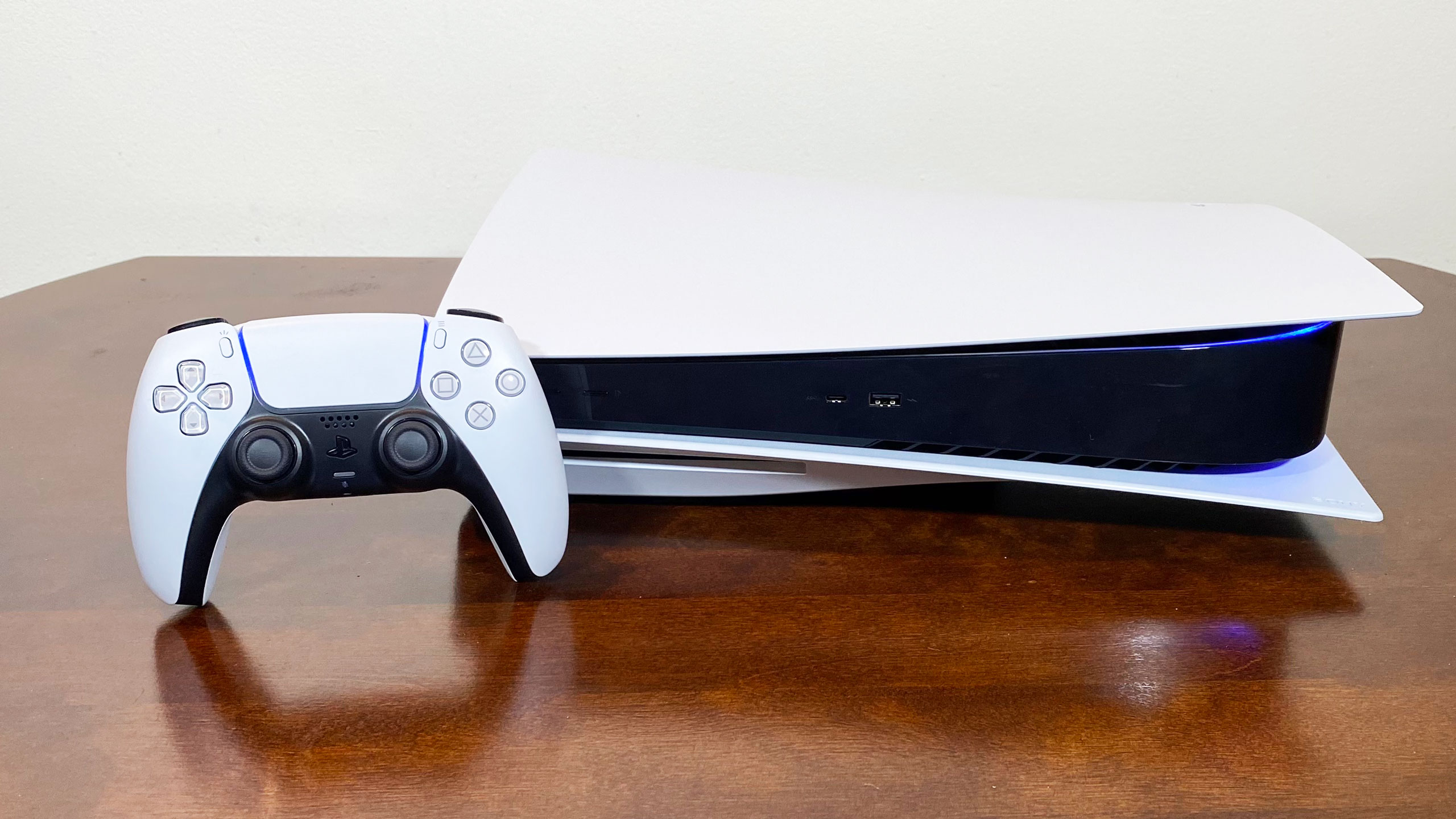Gaming consoles are becoming more expensive as they age for the first time in history — gamers blame tariffs for PlayStation, Xbox, and Switch price increases

From PCs to consoles, patient gamers are often rewarded with falling console prices. Those who are willing to wait for their games see falling prices as interest in any game or generation of hardware wains. But not this generation. The current crop of consoles are all now more expensive than when they launched several years ago.
When the Xbox Series X launched in 2020, it was priced at $499, but now its official price is $599 for the standard edition. The series S launched at $299, but that's now $380 with 512GB storage capacity, or $429 with a terabyte. The PS5 is much the same, now priced at $550 after price increases from its $499 launch price.
Even Nintendo hasn't been immune to price increases. Its last-generation Switch launched at just $299 in 2017, but it's now between $320 and $340 depending on the retailer after an early-August price rise.
This makes this console generation the first that has become more expensive as time has gone on. We're approaching nearly five years since some of this hardware launched and it's much more expensive than it used to be - games included. That's prompted a serious outcry from the gaming community.
This is the first ever generation where console prices have INCREASED, rather than fallen.Also, less console exclusives than any previous gen too.#PlayStation #GamingNews pic.twitter.com/K06PqWGlChAugust 29, 2025
Gamers have been quick to point to tariffs as the main reason for these price increases, and considering the timing, it's hard to blame them - Although a recent ruling that the tariffs are largely illegal could throw the whole scheme into confusion.
However, it's also worth considering inflation as a major driver of these price increases, too. While typical inflation of a couple of percent a year would make older items at lower prices much more expensive if launched later, the last few years have seen rampant inflation. That original Xbox Series X launch price would be over $622 today. The Switch's 2017 launch at $299 would be more like $398 if launched today.
That perhaps puts these price increases in context, even if it's hard to swallow how much more expensive everything seems to be in 2025.
Get Tom's Hardware's best news and in-depth reviews, straight to your inbox.
However, Ars has gone to the effort of crafting some charts to show how great the disparity is, and what we missed this generation. It suggests that if historical price drops of consoles were mirrored today, we could expect the Switch to cost as little as $116 for the base model, and the Xbox Series X and PS5 to be as little as $286.
Indeed, prices are supposed to come down as production of the consoles ramps up, the process node matures and enhancements in manufacturing allow for reduced production costs that often become cost reduced models that appear as the console ages.
It's clear that hasn't happened this time around. Surprisingly, none of the console manufacturers have taken the opportunity to keep prices lower to stand out from the pack. Historically, console manufactures have been happy to take a loss on the hardware if it meant making it up on software. Considering game prices have also risen in recent years, it's hard not to think that at least some advantage is being taken of the situation, rather than it being purely driven by market forces.
Follow Tom's Hardware on Google News, or add us as a preferred source, to get our up-to-date news, analysis, and reviews in your feeds. Make sure to click the Follow button!

Jon Martindale is a contributing writer for Tom's Hardware. For the past 20 years, he's been writing about PC components, emerging technologies, and the latest software advances. His deep and broad journalistic experience gives him unique insights into the most exciting technology trends of today and tomorrow.
-
Notton IDK about the inflation part.Reply
The 2008 financial crisis caused quite a bit of inflation, which was a cumulative 1.6x increase between 2006 and 2016, but the 2006 PS3 and 2013 PS4 aren't heavily affected.
Where as inflation between 2020 and 2025 is 1.25x -
Alvar "Miles" Udell I think it probably has more to do with the combination of console manufacturers being unable to raise the cost of games due to massive backlash as well as subscription sales probably flagging due to subscription fatigue, so they are raising the price of consoles from below or at cost to actually making a profit on them to compensate.Reply
Interesting how that was only mentioned basically as a footnote at the end the article...article smells very AI with a human ending... -
A Stoner Reply
I just did the calculations 2006-2016 had a grand total of 22.8% inflation. The 1.6 times is almost exactly what I get for 2006 through 2024. For 2019 through 2025, I am seeing 25.8% year to date.Notton said:IDK about the inflation part.
The 2008 financial crisis caused quite a bit of inflation, which was a cumulative 1.6x increase between 2006 and 2016, but the 2006 PS3 and 2013 PS4 aren't heavily affected.
Where as inflation between 2020 and 2025 is 1.25x
I think the difference here is that the 2008 financial crisis did not cause disruption in the global supply chains and crash production in multiple industries like the 2020 plandemic. Currently there is less being produced than otherwise would be being produced if we had not deliberately crashed the economy over the flu season. AI has massive demand for the same wafers that would be used to create console chips, and with reduced total production scarcity is the driving factor on prices. They have to make up profits from fewer sales while also paying more for the inputs that go into making the consoles. Then, they also have to hedge for tariffs. -
Thunder64 I don't buy the inflation argument. Also supplu of N7 should be plentiful. More like one company decided to try it and see if they could get away with it and others followed. The problem is, people will likely pay, so this may become the new normal.Reply -
TerryLaze Reply
But AMD can't afford to use all their resources on making almost no margin console parts when they can make server cpus and actually make some money for once.Thunder64 said:Also supplu of N7 should be plentiful.
But even if that wouldn't be the issue, tsmc has increased their prices several times over the last few years so even if supply is plentiful it would still be much more expensive. -
TerryLaze Reply
Many games always came on PC to PC, you meant to say that now even exclusives do.tristanx said:Nowadays I don't even buy consoles. Many games comes to PC these days. -
thestryker The reality is that with this generation node shrinks aren't going to lower prices. I believe Microsoft and Sony moved from N7 to N6, but that's not going to net them anything margins wise on the SoC though console material prices may drop due to needing less cooling. Sony went with N5 for the Playstation 5 Pro keeping the SoC size and power consumption about the same as the standard console. Moving the standard consoles over to a N5 node is unlikely to net enough additional die per wafer to offset node cost let alone considering something like N3.Reply
Just to put die size into perspective the original PS5 die is about the same size as Strix Halo and the PS5 Pro die isn't much smaller (if you took a CCD off Strix Halo it would be less silicon than the PS5 Pro APU).
Microsoft and Sony certainly aren't going to just eat losses from selling consoles anymore. Both have spent too much money buying developers and on subsequent development to justify it. They've also figured out that PC is a great revenue stream compared to the cost of development. I believe the PS5 is about matching the PS4 sales over the same period of the respective lifetime as well and Microsoft seems to have written off this generation hardware wise. -
Rowzdowr The 25% inflation number the article cites is total inflation, but that number isn't really relevant here, since it's mostly driven by housing costs, and electronics as a whole are one of the only group of products that have gone down in price over the last 5 years (except for discrete GPUs, but that's it's own issue). Consoles did briefly dip, as I bought a Series S new over the 2023 holiday for $250. My guess is the real cause is that the console wars are actually over everywhere except Twitter, and boxes are no longer generating money when sold at a loss.Reply -
bigdragon I think tariffs and inflation are being used as cover for corporate greed. Even companies that aren't affected by those things are raising prices. Food, subscriptions, insurance, theme park tickets, airfare, electronics...everything has been rising. I find it baffling that official statistics try to tell me that what I've been seeing at checkout isn't happening.Reply
Seeing prices increase on consoles at the end of their lifespans is perplexing. These things should get cheaper over time -- not more expensive. Thankfully it's easier than ever to avoid consoles. Xbox and PlayStation exclusives are making their way to PC. Nintendo has gone full Scooby-Doo villain. Indies are the new hotness. Steam Deck does what Nintendon't. I won't empower Sony, Nintendo, and Microsoft's greed in gaming.